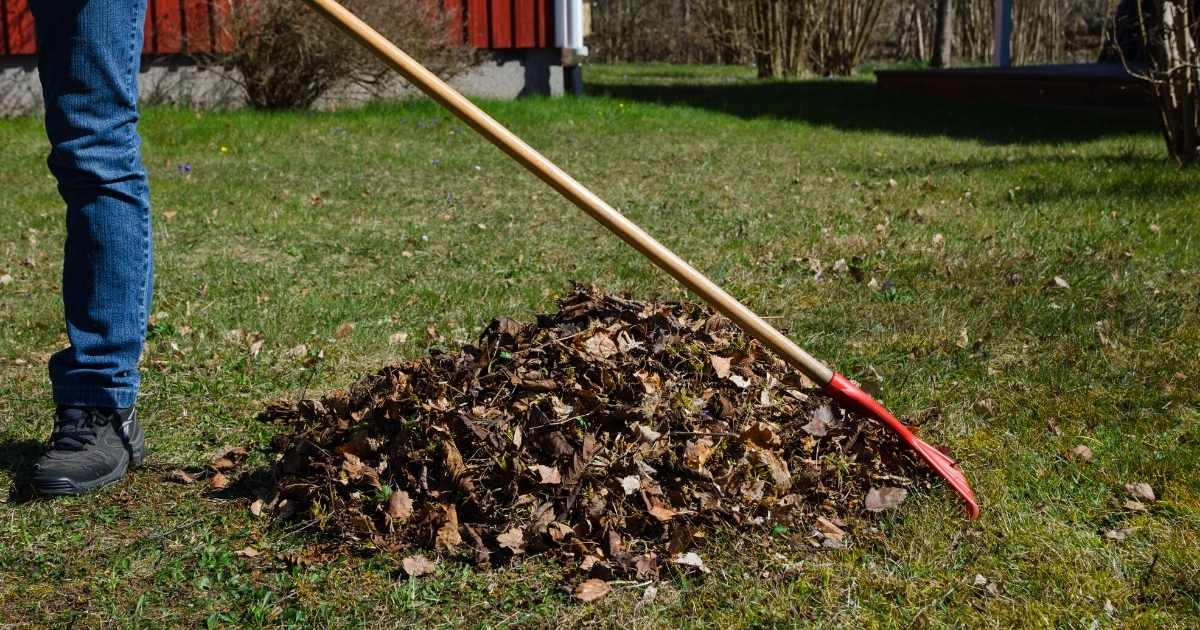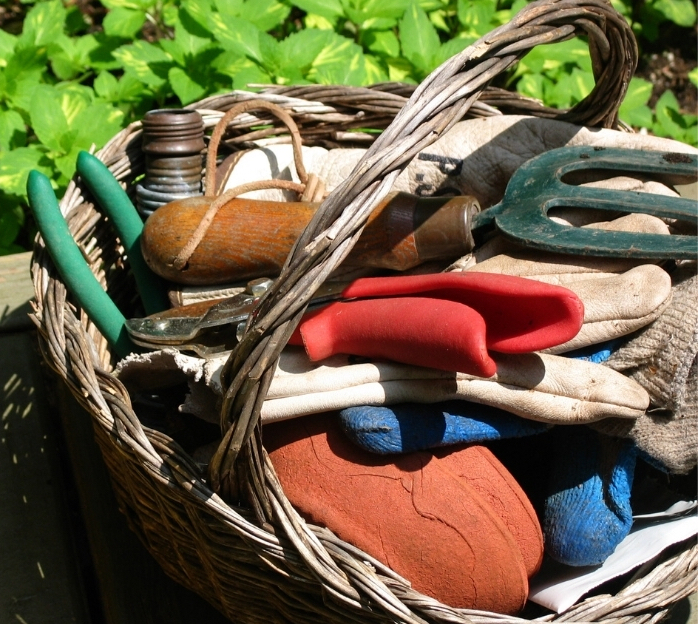
Category: Cooperative Extension

How to sanitize and plan your spring landscape
April 02, 2021 Written by Jill P., Plant Diagnostician
The weather is finally warming up enough for us to leave our hibernation and enjoy the sunshine! While you are enjoying these first few days of warmth, look around your yard and garden and start thinking about spring sanitation.
Why spring sanitation is important
Many plant pathogens overwinter in debris — leaves, branches and twigs that have fallen to the ground, annual plants that have died and are still in the ground or pots, even dead branches still attached to trees. These pathogens emerge when temperatures warm up and can begin infecting tissue early this spring as plants leave dormancy. It’s important to practice good sanitation now to reduce the likelihood of a disease problem later.
Yard cleanup
Rake up and dispose of any leaves still on the ground. If any plants had a leaf spot disease last year, the fungal or bacterial pathogen is still in that fallen leaf tissue and will likely cause infection again this year. Remove whole plants (including roots!) that have died because root pathogens can survive in the soil for many years, especially if the diseased plant tissue is still present. Composting yard waste may destroy plant pathogens, but it’s best to dispose of diseased tissue in municipal compost, the garbage, or by burning (check local and state ordinances for burning) because conventional composting may not reach high enough temperatures to destroy plant pathogens.
Pull weeds - not only will this reduce competition and increase airflow (which reduces plant wetness, a favorable condition for plant pathogens), but certain weed species can harbor plant diseases for certain hosts. For instance, diseases that affect plants in the nightshade family (tomato, potato, pepper, eggplant) can also affect weeds in that family and spread from them.
Check trees and shrubs
carefully for holes, cankers, and dead branches. Look for sunken, dark, or malformed areas on branches and prune them back to a healthy branch. Check for any winter, storm, or wind damage. Remove old flower blooms and any fruit mummies still on trees. Plant pathogens usually thrive in wet, humid conditions. If a plant with a dense canopy previously had a disease issue, prune it this spring to increase airflow and reduce favorable conditions for disease development.
When buying new plants for your landscape, select cultivars with disease resistance. For instance, dogwood spot anthracnose and dogwood powdery mildew are common diseases on flowering dogwood in this area, and there are a number of cultivars on the market with resistance to one or both of these diseases.

Tool sanitation and garden planning
Sanitize any tools, equipment, seed trays, pots, potting mixture, or other materials that may have come in contact with any diseased material last year. Washing pots prevents insect, fungal, or bacterial growth this upcoming season. White buildup on terracotta pots is simply an accumulation of minerals and salts and will not harm plants. This can be brushed off.
Make sure the garden is free of any of last year’s plant material (leaves, stems, roots, fruit), especially if you had a disease or insect problem last year because it will carry over this year if the material is still in the garden.
If you’re planting a garden in the same site as last year, plan on rotating related crop families out of the same garden area for three years to reduce disease and insect pressure. This reduces the likelihood of a soil pathogen building up in the soil. Keep records of your garden layout for planning next year. Templates for garden planning can be found online.
Related plants that should not be grown in the same area of the garden year after year:
● Tomato, potato, pepper, eggplant
● Cucumber, watermelon, squash, pumpkin, muskmelon
● Snap bean, pea, lima bean
● Broccoli, cauliflower, kale, cabbage, brussels sprout, turnips, rutabaga, mustard
● Beet, spinach, swiss chard
● Onion, garlic, chive, leek, shallot
● Carrot, parsley, celery, celeriac, parsnip
When purchasing seeds for this year, check the packet for disease resistance. For instance, if your cucumbers had a powdery mildew infection last year, look for powdery mildew-resistant varieties this year.
Now is also a good time for soil testing before spring fertilizer applications to determine which amendments to apply, if any. A healthy, properly-fertilized plant will be less susceptible to disease and/or insects. UD soil testing information is available on the Soil Testing web page.
Good luck, and have a great growing season!
